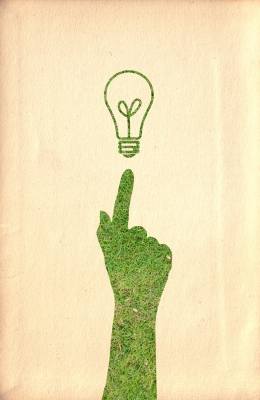
Finding domestic technologies with good eco-credentials is hard. It’s difficult to get excited about bamboo computer mice, for example: changing your mouse is not going to make the world a better place, particularly if it means chucking
away your old one. And having tried a number of wind-up radios, I found I couldn’t get good reception, so I’ve given up using them.
If eco-technologies are going to help us to “green” our lifestyles, they’ve got to work and they’ve got to help us reduce our impact. There are some futuristic technologies, such as the smart Bravia TV from Sony and Samsung’s Eco Bubble washing machine, coming to market that may do just that.
Sony’s Bravia TV has both movement and light detectors, so the screen turns off when you leave the room or fall asleep and the display dims if the room is dark. The Eco Bubble claims to wash better at low temperatures – the “eco bubbles” speeding up the absorption of detergents into clothes – 40 times faster than a conventional washing machine. Not only is this more efficient but it means no soap residue at the end of the wash.
Knowing about my work as an environmental consultant and author, people often come to my house with expectations about its green credentials. What that generally means is that they assume I’ll have solar panels on my roof or a wind turbine in the garden. I don’t have either, but I do have a very small solar panel lurking near my back door which powers the movement-sensitive LED light. It’s replaced a standard outside light, which was at least 200 watts.
Most of the technologies I have looked at are trying to save energy in one form or another and I’m intrigued by the different approaches they take. Tracking how much energy you use doesn’t directly save anything at all but it’s a good place to start.
The energy monitor I bought helped me to identify that I had a very inefficient old chest freezer, costing about £100 a year to run. Getting rid of it saved me the cost of my monitor. Today you can buy one for less than £50 – or get the EnviR monitor for free if you sign up to Ecotricity – so you could save even more.
At the other end of the spectrum is an energy-saving device that you can “fit and forget”. The low-voltage optimiser, made by V-Phase, reduces the voltage of electricity coming into your home to match what your appliances need. It’s particularly effective for refrigeration and results in an average saving of 6-12 per cent of your electricity bill.
The £299 price tag might put some people off, but the system and savings have been independently verified.
I have to admit that I’m not great at reading instructions, and this proved to be a problem when I got an Eco Kettle. I couldn’t immediately see how it worked. Now, I’ve got the hang of filling up one section and pressing the knob to transfer the water to the other. The benefit is that you save energy by not boiling more water than you need.
Another eco-tech innovation that takes a while to master is the Dyson DC24 vacuum cleaner. However, the space-age design is bag-less and super energy-efficient too: with a 650-watt motor, it uses less than half the electricity of the average vacuum cleaner.
Of course, while eco-technologies can help a more “eco-friendly” lifestyle, they should not be seen as a substitute for changing behaviour. We should be careful not to buy stuff we don’t need and kid ourselves that we’re saving the planet by doing so.
Article courtesy of ft.com

